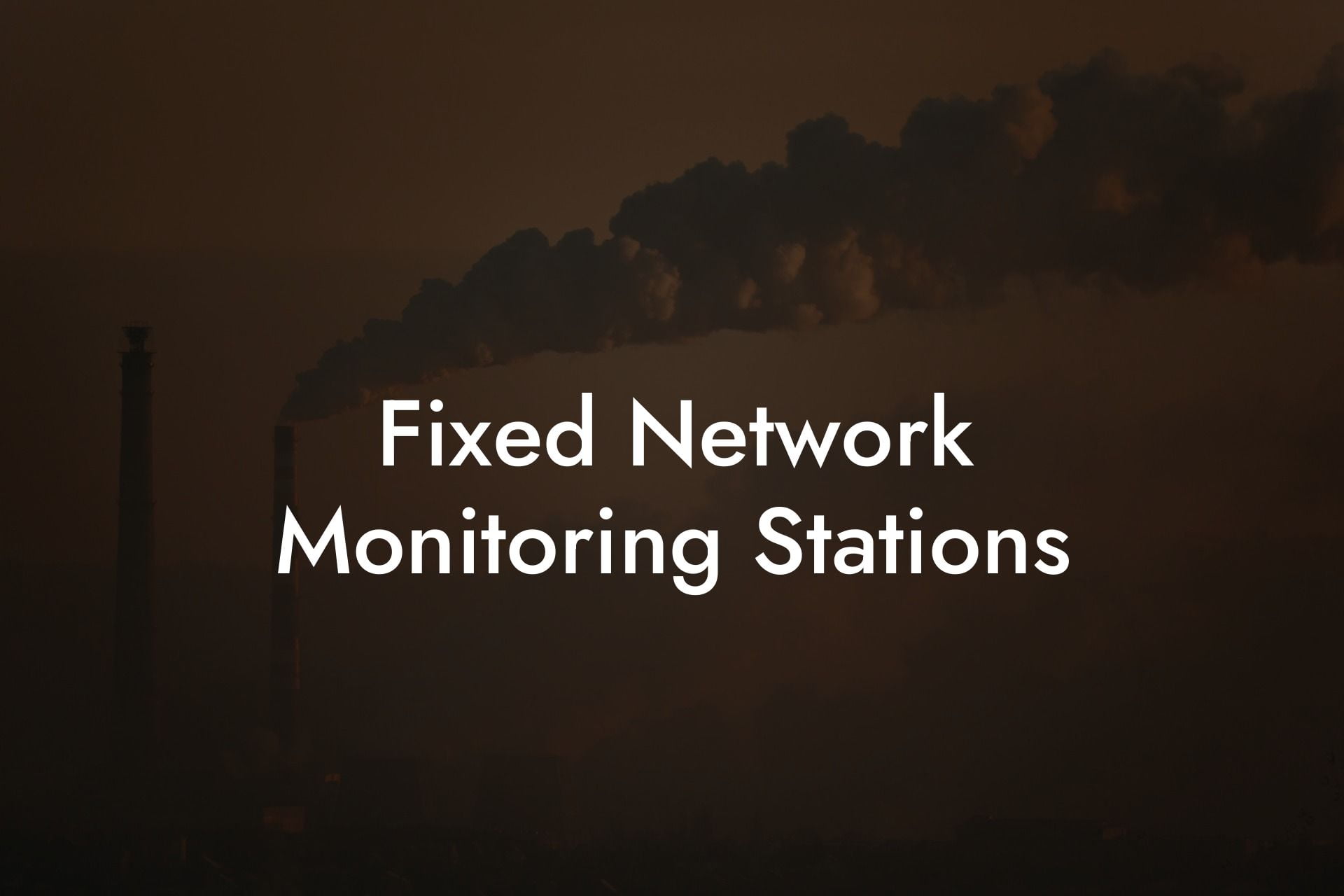Introduction to Fixed Network Monitoring Stations
Fixed Network Monitoring Stations (FNMS) are essential components in the landscape of air quality monitoring. Permanently installed at strategic locations, they continuously gather data on various air pollutants, providing critical insights into the air quality of a region.
Fixed Network Monitoring Stations Table of Contents
Introduction to Fixed Network Monitoring Stations
Key Elements of Fixed Network Monitoring Stations
Functioning of Fixed Network Monitoring Stations
Importance of Fixed Network Monitoring Stations
Challenges in Operating Fixed Network Monitoring Stations
The Role of FNMS
FNMS are designed to offer a consistent and long-term perspective on air quality trends, enabling effective monitoring and management of air pollution.
Key Elements of Fixed Network Monitoring Stations
Air Sampling and Analytical Equipment
FNMS are equipped with sophisticated sensors and analyzers to measure a wide range of air pollutants, such as particulate matter (PM10 and PM2.5), nitrogen oxides (NOx), sulfur dioxide (SO2), carbon monoxide (CO), and ozone (O3).
Meteorological Instruments
These stations also record meteorological data, which is crucial for understanding how weather conditions affect air pollutant levels and dispersion.
Data Collection and Transmission
Data collected by FNMS are transmitted to central databases for analysis, contributing to real-time air quality assessments and long-term environmental studies.
Functioning of Fixed Network Monitoring Stations
Continuous Monitoring
FNMS operate around the clock, providing continuous monitoring of air quality, which is essential for timely detection of pollution episodes.
Quality Control
Regular maintenance, calibration, and validation of equipment are vital to ensure the accuracy and reliability of the data collected.
Importance of Fixed Network Monitoring Stations
Public Health
Data from FNMS play a critical role in identifying and mitigating health risks associated with air pollution.
Environmental Policy
FNMS data are instrumental in formulating and evaluating air quality regulations and policies.
Research and Development
Researchers utilize data from FNMS to study air pollution trends, sources, and impacts, advancing scientific understanding and technological innovation in air quality management.
Challenges in Operating Fixed Network Monitoring Stations
Site Selection
Choosing optimal locations for FNMS that accurately represent air quality conditions in an area is a complex task.
Infrastructure and Maintenance
Maintaining the infrastructure of FNMS, especially in harsh environmental conditions, requires substantial resources and expertise.
Data Management
Effectively managing the vast amounts of data generated and ensuring its accessibility for various stakeholders is a significant challenge.
FNMS in the UK
The UK's Air Quality Monitoring Network
The UK boasts a comprehensive network of fixed monitoring stations, providing valuable data on national and local air quality levels.
Regional Coverage
FNMS in the UK are strategically placed across different regions, including urban, rural, and industrial areas, to ensure a comprehensive understanding of the country's air quality.
UK Air Pollution: Your Premier Air Quality Data Source
Extensive Database on Air Pollution
UK Air Pollution offers a rich database of air pollution data collected from fixed network monitoring stations across the UK, making it an invaluable resource for a diverse range of users.
Why UK Air Pollution?
Our platform provides an engaging, informative, and professional gateway to understanding air pollution in the UK. We cater to the needs of researchers, policy-makers, environmental professionals, and the public.
Elevating Air Quality Management and Research
With UK Air Pollution, gain access to detailed and comprehensive insights into air quality, enhancing the scope and impact of your projects, research studies, and environmental initiatives.














